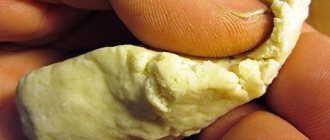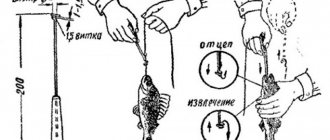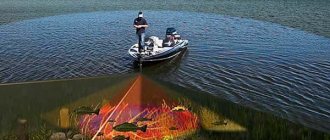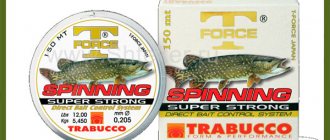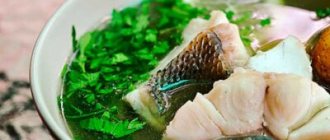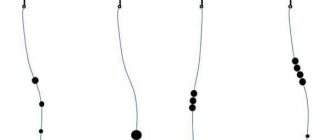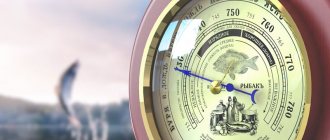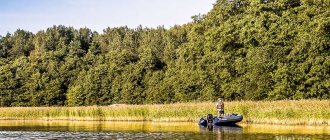If you have never held a fishing rod in your hands, and have only seen live fish in an aquarium or on the “Hunting and Fishing” channel, then this article is for you.
You have firmly decided to learn how to fish. Like any other business, any fishing trip will require some preparation. It is necessary to collect information and prepare a “material base”.
Preliminary information
To get acquainted with fishing, there is no point in going to the remote taiga or to a huge lake. To understand how and what to do when fishing, you can practice on a small body of water somewhere nearby. A small lake or river will do. I recommend studying on reservoirs without a current, if possible with a clean bank and a flat, hard bottom.
Advice! Collect information about bodies of water.
The easiest way to find out something about bodies of water located in relative proximity is to use some service like Google Maps or WikiMapia. On the map you can always find up to a dozen such reservoirs, from village fire ponds and streams to reservoirs, ponds and rivers.
Some fishermen leave important comments from the point of view of information content on such resources:
- depth of the reservoir in different areas;
- information about the species of fish living in the reservoir, its size and bait;
- fishing methods and possible baits.
This information will help in preparing for going out onto the pond.
It would be nice to get to this body of water at least once before fishing, take a closer look, chat with local regulars, just walk along the shore, identifying places with stands for fishing rods.
If there is such a stand on the shore, it means that someone is fishing here. And if it catches, it means there are fish in this place. In places with stands you need to carefully inspect the shore. Along with cigarette butts, the following may remain on the shore:
- cups or syringes with remaining batter;
- empty jars of peas or canned corn;
- containers with the remains of soil (in which the red worm is usually stored);
- jars with sawdust (maggots are stored in such containers);
- plastic bags or paper bags (in which bloodworms are usually sold).
These items will help you decide on the choice of bait. This information is quite enough for your first fishing trip.
Advice! If you manage to get a local fisherman to talk, listen carefully and try not to interrupt. These people are not spoiled by attention. To rejoice that they have found a grateful listener, they can give out a lot of useful information on bait, gear, places and times of fish biting.
The hook shouldn't be a headache.
There is a fishing rod and fishing line, let's move on. To catch a fish you will also need a hook, and there are so many of them. You are at a loss from this variety of hooks on display. The main thing is not to panic. After looking at the hook, ask what material it is made of. When ordinary wire was used for its manufacture, it means that these are the simplest, but unreliable and, nevertheless, economical hooks.
If you need a headache and you think these are right for you, then buy a lot of them. The negative is the fact that they often break. But the positive side of these hooks is that you will learn how to attach them to the fishing line perfectly and quickly. The main thing is that the price is publicly available. Well, if you don’t like such problems, then turn your attention to the middle price category.
There is another category of hooks, these are alloys of vanadium and hydrocarbon steel. They are extremely light and thin. Their cost is quite high, but thanks to the material from which they are made, this fishing product is durable. We can say that such hooks are the standard of quality.
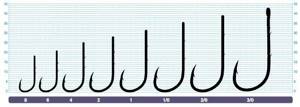
Before you start purchasing, decide what kind of fish you will catch. If it is carp or, for example, bream, then the leg must be long enough, otherwise the fish will wave its tail at you as a sign of gratitude for the “treat”. But for crucian carp, roach, rudd and others like them, the hook leg should be much smaller.
A few more rules that should not be neglected. When choosing hooks, make sure that they are smooth, shiny, do not break, and are elastic when unbent. The end of the tip on the hook should not be ground off. If the wire has a split or a belly, such a product is rejected. To test the sharpness of the sting, run it over your nail. If it does not slip, but immediately digs into the nail, then it is of excellent quality. There should also be a ring bent tightly on the head of the hook, and maybe a spatula.
Preparing for fishing
At a minimum, you will need:
- Equipped fishing rod;
- Lures;
- Consumables;
- Container for storing fish.
You can assemble and equip the fishing rod yourself by first purchasing a rod, reel, main line, float, set of weights, leader line and hooks.
But for the first time it’s better to buy yourself an equipped telescopic rod up to 4.5 m long. Almost any fishing store sells such rods. You can ignore the manufacturer at first. The Chinese have learned to counterfeit all brands.
Such a rod can last for a year or ten. They are not expensive. It’s difficult to call the quality high, but catching a trophy on your first fishing trip is even more difficult. It’s easy for an inexperienced fisherman to break an expensive, light, but rather fragile fishing rod.
You still have to buy spare parts. You will need:
- Main line (section from 0.18 to 0.24 mm);
- Line for leashes (section from 0.10 to 0.14 mm);
- Floats with a carrying capacity from 1 to 2.5 grams (at least 3 pieces with clearly visible antennas);
- Set of pellet sinkers;
- Hooks No. 8, No. 10 and No. 12 (according to the European numbering system) per pack. You can use non-Japanese ones (Kamatsu or Gamakatsu). For fishing for relatively small fish, an Osko or Cobra will suffice.
Advice! Do not be fooled by the persuasion of a seller who will try to sell you the most expensive thing he has. Choose accessories in the mid-price range.
The choice of bait depends on what kind of fish lives in the pond. But the following are considered universal baits:
- In spring - bloodworms and maggots;
- In summer - red worm, maggot, dough, mash and pearl barley;
- In autumn - red worm, maggots and bloodworms.
Advice! Fish, however, may have its own special opinion on this matter. That is why preliminary collection of information about fish and its taste preferences in each specific body of water is necessary. Try different baits while fishing.
Fishing baits are best stored in a dark, cool place.
Getting ready for winter fishing

Fishing equipment:
- Fishing rods , spinning rods, rods. Choose a rod that is short and lightweight.
- Hook for big fish, feeders, jigs, bait, attachments, bait, cage, landings.
Spare parts for fishing rods:
- Ice drill with several augers in reserve. They use it to drill holes in the ice.
- Ice pick. An ice pick can also be used to punch holes, and it also serves to test ice for fragility.
- Scoop , ladle, sump ladle.
To scoop ice chips from holes:
- Winter fishing box. You can sit on it, you can put accessories in it.
- Chipper release.
- Depth gauge for measuring the depth of the bottom of a reservoir. You can do it yourself by tying knots on a long rope every meter, with a sinker at the end of the rope. You can buy an echo sounder.
Clothing that will protect you from cold and wind:
- Ushanka, knitted hat.
- A pair of woolen mittens and woolen socks.
- We put one pair on, and put the second one in reserve in the backpack.
- Face mask to prevent frostbite on your skin.
- Splurge on a khaki winter fishing suit with overalls and thermal underwear underneath. You don't have to dress like a cabbage and your movements won't be constrained.
- On the feet are felt boots with galoshes.
Additional equipment:
- Tent for more convenient fishing. It is best to use an umbrella tent; do not forget the additional attachments to it. Choose a tent with bright colors as it will be more visible.
- Rope , candles, lantern.
- Firewood, coal for fire. Lighting paper.
- A sled , wooden or plastic, used to drag caught fish across the ice.
- Lifesavers or fishing claws are worn around the neck. Hide the ends in your pockets so as not to get in the way. The claws will help you if you fall through the ice.
- Backpack.
- First aid kit.
- Thermos with hot tea.
Wrap the products in cling film. The most convenient way is to take sandwiches.
Fishing time
Typically, the best bite for any fish on any body of water in ideal weather conditions begins in the morning, at dawn and ends around 11.00. Then there is a pause when only very small fish are caught on the hook. The bite is restored around 16.00 and can continue until dusk. You can also estimate with the help of a biting calendar what time and how the desired fish bites.
There may be some nuances. During the hot summer months, fish may bite in shallow waters only at night. In cold, deep reservoirs (peat, clay and chalk quarries), the bite can start quite late even in the very heat.
Advice! Each body of water lives its own life, according to its own laws, to which the fish living in the body of water also obey. These laws must be understood and used for your own benefit. Remember the “routine” of the life of the reservoir.
The feeder set must contain several tips
When purchasing this attribute, which consists of several elbows, most often three, you should know that it is equipped with several interchangeable tips (up to four pieces). They are painted in bright colors so that they can be easily seen in the late afternoon or early morning, when the sky “touches” the water. The tops have different weights, rigidity, and strength depending on the material from which they are made.
It can be monolithic fiberglass or carbon fiber. The latter are much lighter, but inferior in strength to heavier fiberglass ones. There is a marking on the tip indicating the weight used for it.
The effect of pressure on fish biting
Preparing complementary food for carp at home
Feeders with an additional elbow are also sold, which makes it possible to increase its length. Do not forget that the length of the feeder is reflected in its weight. And this negatively affects the physical condition of the fisherman.
Therefore, it is worth asking what material was used to make the feeder form. If the cost of the product does not play a big role, then a form made of carbon fiber is best suited. Unlike composite and fiberglass, these are the strongest and most reliable blanks.
Selecting a location
When you find yourself on a new body of water for the first time, you need to choose a fishing spot. Try to choose it in such a way that:
- the rising Sun would not blind you, it would be behind you;
- casting was not interfered with by branches of trees and bushes from behind and on the sides;
- in front of you was a fairly open area of a reservoir without water lilies, egg capsules and other strong and “tenacious” vegetation or snags.
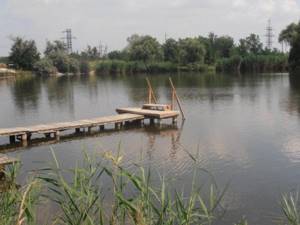
In this place it is necessary to clean the shore from crispy twigs and rustling grass. Place a stand under the rod and figure out where the fish tank or bucket will be located.
Advice! For the first fishing, the criteria for choosing a fishing spot are a necessity. In the future, when the noble art of precise casting becomes the norm for you, such “difficult” places will become most attractive to you. Remember them.
Lure
On your first fishing trip and in small bodies of water, you don’t need to use bait.
Preparing gear
- We unfold the rod, first lifting the line handler bracket to release the line.
- We check the strength of the knees and the orientation of the passage rings. The rings should be in line with the coil.
- We check the presence and strength of fastening of the float to the main fishing line and the reliability of fastening of the sinkers.
- We check the hook and, if necessary, change it to another one that is more suitable in color and size to the bait.
- We set the depth by moving the float along the main line.
Advice! It’s good to at least have a rough idea of the nature of the bottom and its topography at the fishing spot. To do this, you can use either a depth gauge or a portable sonar.
Casting
At first, beginners are recommended to cast the bait using a method called a “pendulum”. This is the simplest, most accurate and quietest way to cast gear.
We hold a fishing rod in one hand. In the second gear (for a hook with bait). We choose a casting location at a distance of no more than 9 meters (at first it is better not to cast to a distance that is more than twice the length of the rod).
With a confident movement, we raise the tip of the rod and at the same time release the hook with the bait. The bait flies in the direction of the target. It’s better to throw it slightly, then pull it to the fishing spot. In this case, the fish will not be so scared, and the line can be submerged so that it is not carried away by the wind and surface current.
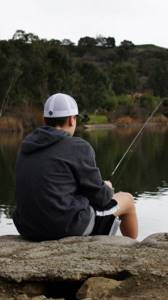
This casting method has one very serious drawback - it is ineffective in windy weather.
Advice! If possible, at first choose a fishing spot so that the wind blows from behind you, helping to cast the tackle.
Line and leashes
Spinning fishing can be done with either monofilament or braided fishing lines. The choice of material is determined by the fishing distance. Braided cords have a rigid, inextensible structure, which is better at attracting bites from long distances and allows you to control the course of the bait much more effectively. Monofilament fishing line, having a high stretch coefficient, does an excellent job of absorbing excess loads that arise when fighting hooked fish. But such material transmits information absolutely poorly from long distances and is mostly used for short-range fishing.
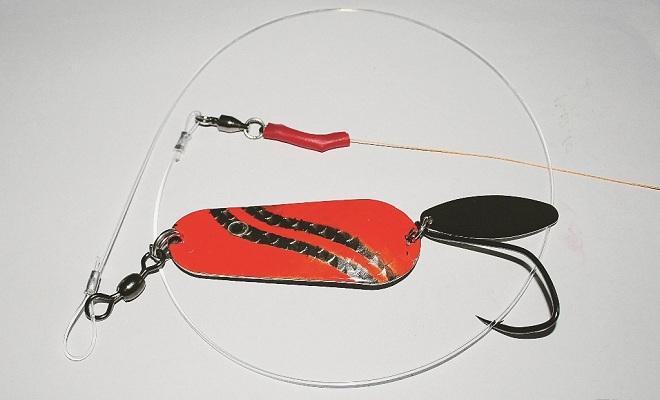
When equipping a spinning rod for fishing from the shore, preference is given to braided cords. When planning fishing from a boat, where you can approach a promising point within a short distance, it is worth considering the use of monofilament fishing lines. Braids are stronger than monofilament and their diameters in relation to breaking loads are significantly lower than monofilament wood. For rigging with braids, cords with diameters of 0.12-0.18 mm are most often used, but if you use regular nylon fishing line, you need to use a material no less than 0.2 mm thick.
Important! Such an element of equipment as a leash is used purely for catching pikes.
Modern spinning rods use soft Kevlar and fluorocarbon leaders. Steel, titanium and tungsten hard options are used much less frequently, due to their strong influence, which worsens the performance of the bait. As a rule, the optimal leash length is around 15–20 cm. In all other cases, baits are tied directly to the cord or fast-release carabiners and fasteners are used. For rotating spinners, it is necessary to have a swivel to prevent twisting and deformation of the thread.
Bite
If the depth is chosen correctly and the float is correctly submerged, only the float antenna will stick out of the water. She needs to be watched. You need to hook, that is, pull the tackle towards you with a small sharp jerk, if the float:
- Lay down on the water;
- He bent down and slowly swam to the side;
- Went under water;
- It stands still, but small but noticeable circles spread out from the antenna on the surface of the water.
Advice! There is no need to rush with hooking at first. When you bite, mentally count to three and only then hook.
Spinning fishing technique for beginners
To properly fish with a spinning rod, an angler needs to master several basic types of fishing and be able to use them under conditions suitable for fishing tactics. The quality of the wiring itself will depend on the proper balance of the rod and the weight of the bait in conjunction with the fishing depth and current forces. Wires carried out in reservoirs without currents or with little current are much easier to do than fishing on a fast river. Current forces influence the operation of the simulator, distorting its trajectories and level horizons, which is taken into account when selecting baits with a test that can quickly bring the tool to operating parameters without overloading the form itself. During wiring, they carefully monitor the movement of the quivertype and their own tactile sensations, reacting to the failure of the simulator with short jerks and sharp cuts.
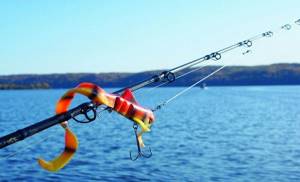
Important! Any malfunction of the fishing tool is fraught with a bite from cautious and suspicious fish, requiring a reverse reaction from the spinning angler.
Having felt the resistance of prey hooked, you need to calmly begin fishing, trying to keep both the catch and the tackle itself intact.
Stepped type of wiring
The stepped type of retrieve is the most productive method in spinning hunting. It is used in most cases when fishing is carried out with silicone. The technique for holding the nozzle is quite simple. After the simulator is deepened, the spinning player begins reeling in the cord with two or three turns of the reel handle, pausing. During the revolutions of the mechanism, the silicone lifts off the ground, making a kind of step in the water column, and during a pause it falls completely freely back to the bottom. This kind of jig for beginners helps them develop their own fishing tactics based on maintaining different pause times, speed and number of reeling revolutions. The line is suitable for catching pike, pike perch, perch and catfish. Bycatch can include bream, carp, carp and crucian carp.
Uniform wiring
The uniform wiring method is much simpler than the stepped type of feeding the simulator. This is a classic type of fishing with a rotating lure, used to catch all types of predatory and peaceful fish. In addition to spinners, they fish on a uniform retrieve with wobblers and unloaded silicone. The wiring technique is quite simple. The spinner brings the fishing tool into the hunting zone and, when it reaches the working horizon, begins winding the cord at the same speed. During the process of winding the threads, the failure of the simulators is monitored by cutting. As a rule, the technique does not imply pausing and is characterized only by changing the speed of the bait during the next cast, which depends on the activity of the fish.
Important! Aggressive fish take at fast speeds, passive fish prefer to attack a sluggish bait.
In practice, spinning anglers often have to combine styles, deviating from the classical rules. Often, uniform movements with changing speeds and wave movements of spinners or wobblers are successful. In other situations, the predator likes to pause and attack the bait hanging in the water column.
Fishing
Successful fishing with a spinning rod ends with a pleasant moment for the angler, namely fishing. The bite is accompanied by an immediate hook, a sharp, but not sweeping, movement as short as possible. If you feel the weight on the hook, you should not rush, forcing events, pulling the fish to the shore or side of the boat.
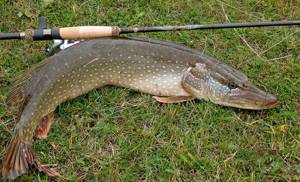
It’s good when fishing with a wobbler contributed to your luck and two or even three hooks dug into the predator’s mouth and securely held it on the rod. It’s another matter when the lure with one hook from the outside of the mouth or by the tip of the lip grabbed a lively pike, producing tall candles and aggressive waste during fishing. At such moments, the angler’s concentration and constant tension on the line help to cope with any fish. A particularly large trophy is pumped out using a fishing rod and winding the released fishing line with a reel. When fishing from boats, they always keep a landing net with them, which they use to pick up fish brought to the side. When fishing from coastlines, they look for comfortable and flat banks where they can bring caught fish with the possibility of further removing them from the water to land.
Releasing the hook
The baited hook may end up deep in the fish's throat. To get it out, fishermen use either an extractor or regular tweezers.
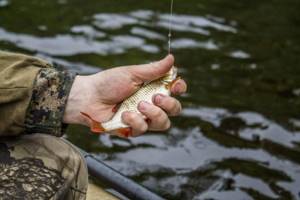
The bait can and should be changed for a fresh one every 10-15 minutes. But if the fish does not approach your bait for more than one hour, it is better to change the lead line to a thinner one, change the float to a very light one, and experiment with depth. If this does not help, you need to change the fishing location altogether.
Advice! If your very first fishing trip is not successful, don’t despair. Any body of water is a mystery that needs to be solved. Some people begin to understand the logic of fish behavior immediately, while others will need time and patience. There is no need to rush, try to relax, enjoy communicating with nature.

